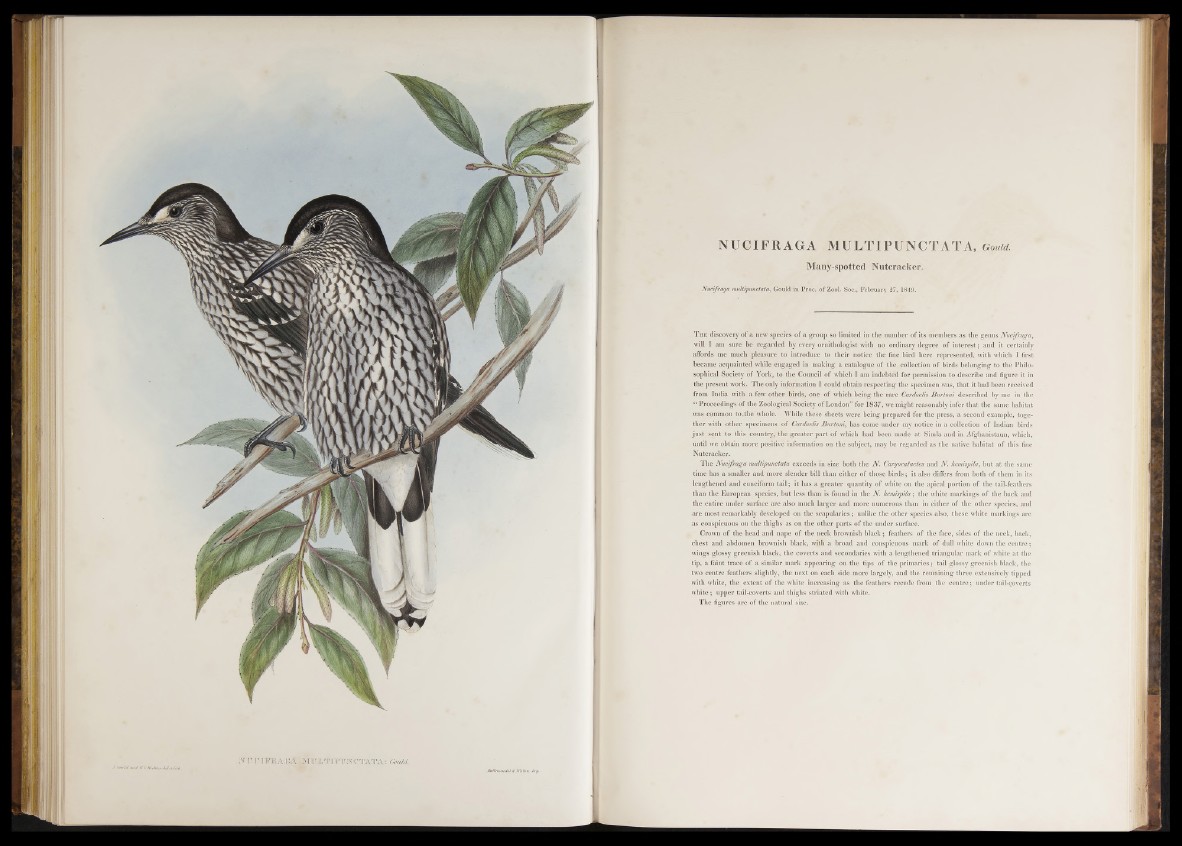
NUCIFRAGA MULTI PUNCTATA, Gould.
Many-spotted Nutcracker.
Nucifraga multipunctata, Gould in Proc. o f Zool. Soc., February 27, 1849.
T h e discovery of a new species of a group so limited in the number of its members as the genus Nucifraga,
will I am sure be regarded by every ornithologist with no ordinary degree o f in te rest; and it certainly
affords me much pleasure to introduce to their notice the fine bird here represented, with which I first
became acquainted while engaged in making a catalogue of the collection o f birds belonging to the Philosophical
Society of York, to the Council o f which I am indebted for permission to describe and figure it in
the present work. The only information I could obtain respecting the specimen was, that it had been received
from India with a few other birds, one of which being the rare Carduelis Burtoni described by me in the
“ Proceedings of the Zoological Society of London” for 1837, we might reasonably infer that the same habitat
was common to.the whole. While these sheets were being prepared for the press, a second example, together
with other specimens o f Carduelis Burtoni, has come under my notice in a collection of Indian birds
ju st sent to this country, the greater part of which had been made a t Simla and in Afghanistaun, which,
until we obtain more positive information on the subject, may be regarded as the native habitat of this fine
Nutcracker.
The Nucifraga multipwictata exceeds in size both the N. Caryocatactes and N. hemispila, but at the same
time has a smaller and more slender bill than either of those b ird s; it also differs from both of them in its
lengthened and cuneiform t a il; it has a greater quantity of white on the apical portion o f the tail-feathers
than the European species, but less than is found in the N. hemispila; the white markings o f the back and
tlie entire under surface are also much larger and more numerous than in either of the other species, and
are most remarkably developed on the scapularies; unlike the other species also, these white markings are
as conspicuous on the thighs as on the other parts o f the under surface.
Crown of the head and nape of the neck brownish black; feathers of the face, sides of the neck, back,
chest and abdomen brownish black, with a broad and conspicuous mark o f dull white down the cen tre ;
wings glossy greenish black, the coverts and secondaries with a lengthened triangular mark of white at the
tip, a faint trace of a similar mark appearing on the tips of the primaries; tail glossy greenish black, the
two centre feathers slightly, the next on each side more largely, and the remaining three extensively tipped
with white, the extent o f the white increasing as the feathers recede from the cen tre ; under tail-Qoverts
white ; upper tail-coverts and thighs striated with white.
The figures are of the natural size.